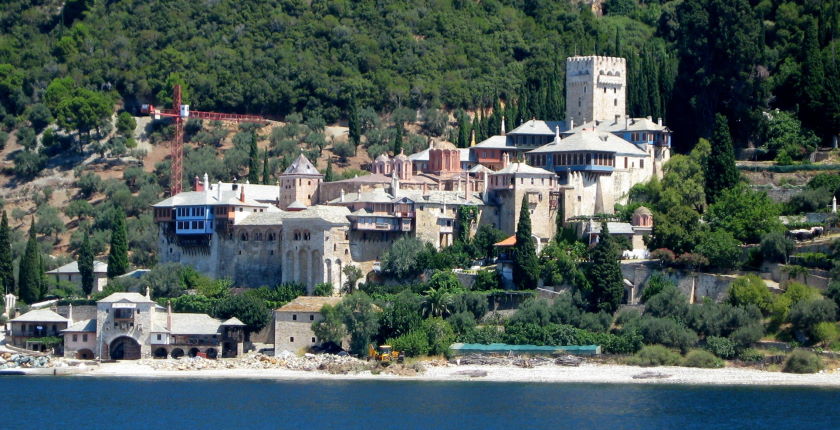
Photo: Docheiariou monastery on Mt. Athos (Gabriel / https://creativecommons.org/licenses/by/2.0/legalcode)
The Monastic Republic of Mount Athos in Greece is taking a giant leap into the future, when it comes to technology. Seventeen monasteries will not only produce electricity from renewable sources, but the systems will be hybrid – a combination of solar and batteries. Mytilineos was picked as the contractor.
High-efficiency solar power panels and storage systems ensure the security of electricity supply, energy efficiency and cost reduction alongside environmental protection. Greece and the autonomous Monastic Republic of Mount Athos recognized the opportunity and realized that diesel-fueled generators must be replaced with a cleaner source.
The project to mount 21 photovoltaic systems for 17 monasteries and their external units, with a combined peak capacity of 2.64 MW, was awarded to domestic company Mytilineos. It said its Sustainable Engineering Solutions Business Unit (SES BU) would be tasked with the supply, installation and operation.
Monasteries on Mount Athos will get batteries with a total capacity of 5 MWh
According to a study conducted for the project, Mount Athos, also known as Agion Oros (Holy Mountain), can meet three quarters of its electricity consumption with the photovoltaic units. But the contract with the monastic community includes lithium ion batteries with a total capacity of 5 MWh, which would make the installations hybrid, Mytilineos added.
The area, called “the garden of Panagia” – Mary, the mother of Jesus, isn’t connected to the national grid. The Serbian Hilandar monastery, Russian Saint Panteleimon and Greek Konstamonitou monastery aren’t included.
The project on Athos is worth EUR 12.8 million excluding value-added tax and it will last 18 months, Mytilineos said. It will be paid for with European funds obtained through the regional authority of Central Macedonia.
The photovoltaic systems will be installed for 17 monasteries on Mount Athos and their external units
The small solar power plants will reduce the emissions of carbon dioxide and pollutants, lower noise and prevent the release of dust from the transportation of diesel fuel on unpaved roads. A digital energy management system (EMS) and high-efficiency equipment will contribute to energy efficiency, according to the announcement.
The savings in terms of primary energy consumption were earlier estimated at 4 GWh per year.
The biggest solar power plant is planned for the Vatopedi monastery – 540 kW. Most of the other units are set to have 144 kW, including the ones in the Georgian Iviron monastery and Bulgarian Zograf.


















Be the first one to comment on this article.